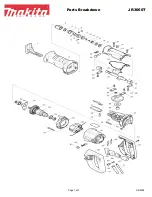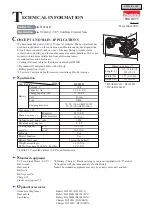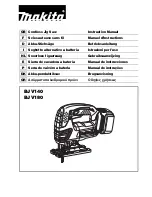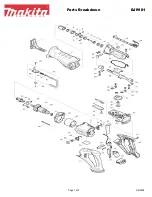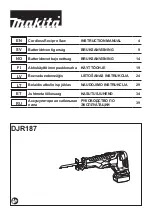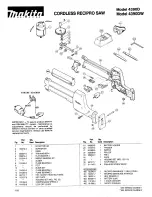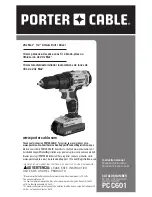
0
Important safety instructions
When using your telephone equipment, basic safety precautions should always be followed to reduce the risk of fire, electric shock and
injury, including the following:
Read and understand all instructions.
Follow all warnings and instructions marked on the product.
Unplug this product from the wall outlet before cleaning. Do not use liquid or aerosol cleaners. Use a damp cloth for cleaning.
Do not use this product near water such as near a bath tub, wash bowl, kitchen sink, laundry tub or a swimming pool, or in a wet
basement or shower.
Do not place this product on an unstable table, shelf, stand or other unstable surfaces.
Slots and openings in the back or bottom of the telephone base and handset are provided for ventilation. To protect them from
overheating, these openings must not be blocked by placing the product on a soft surface such as a bed, sofa or rug. This product
should never be placed near or over a radiator or heat register. This product should not be placed in any area where proper
ventilation is not provided.
This product should be operated only from the type of power source indicated on the marking label. If you are not sure of the type of
power supply in your home or office, consult your dealer or local power company.
Do not allow anything to rest on the power cord. Do not install this product where the cord may be walked on.
Never push objects of any kind into this product through the slots in the telephone base or handset because they may touch
dangerous voltage points or create a short circuit. Never spill liquid of any kind on the product.
To reduce the risk of electric shock, do not disassemble this product, but take it to an authorized service facility. Opening or
removing parts of the telephone base or handset other than specified access doors may expose you to dangerous voltages or other
risks. Incorrect reassembling can cause electric shock when the product is subsequently used.
Do not overload wall outlets and extension cords.
Unplug this product from the wall outlet and refer servicing to an authorized service facility under the following conditions:
When the power supply cord or plug is damaged or frayed.
If liquid has been spilled onto the product.
If the product has been exposed to rain or water.
If the product does not operate normally by following the operating instructions. Adjust only those controls that are covered
by the operation instructions. Improper adjustment of other controls may result in damage and often requires extensive
work by an authorized technician to restore the product to normal operation.
If the product has been dropped and the telephone base and/or handset has been damaged.
If the product exhibits a distinct change in performance.
Avoid using a telephone (other than cordless) during an electrical storm. There is a remote risk of electric shock from lightning.
Do not use the telephone to report a gas leak in the vicinity of the leak. Under certain circumstances, a spark may be created when
the adapter is plugged into the power outlet, or when the handset is replaced in its cradle. This is a common event associated with the
closing of any electrical circuit. The user should not plug the phone into a power outlet, and should not put a charged handset into the
cradle, if the phone is located in an environment containing concentrations of flammable or flame-supporting gases, unless there is
adequate ventilation. A spark in such an environment could create a fire or explosion. Such environments might include: medical use
of oxygen without adequate ventilation; industrial gases (cleaning solvents; gasoline vapors; etc.); a leak of natural gas; etc.
Only put the handset of your telephone next to your ear when it is in normal talk mode.
The power adapters are intended to be correctly oriented in a vertical or floor mount position. The prongs are not designed to hold
the plug in place if it is plugged into a ceiling, under-the-table or cabinet outlet.
SAVE THESE INSTRUCTIONS
Precautions for users of implanted cardiac pacemakers
Cardiac pacemakers (applies only to digital cordless telephones):
Wireless Technology Research, LLC (WTR), an independent research entity, led a multidisciplinary evaluation of the interference
between portable wireless telephones and implanted cardiac pacemakers. Supported by the U.S. Food and Drug Administration,
WTR recommends to physicians that:
Pacemaker patients
Should keep wireless telephones at least six inches from the pacemaker.
Should NOT place wireless telephones directly over the pacemaker, such as in a breast pocket, when it is turned ON.
Should use the wireless telephone at the ear opposite the pacemaker.
WTR’s evaluation did not identify any risk to bystanders with pacemakers from other persons using wireless telephones.
Operating range
This cordless telephone operates with the maximum power allowed by the Federal Communications Commission (FCC). Even so, this
handset and telephone base can communicate over only a certain distance - which can vary with the locations of the telephone base and
handset, the weather, and the layout of your home or office.
When the handset is out of range, the handset displays
Out of range or no pwr at base
.
If there is a call while the handset is out of range, it may not ring, or if it does ring, the call may not connect well when you press
. Move
closer to the telephone base, then press to answer the call.
If the handset moves out of range during a telephone conversation, there may be interference. To improve reception, move closer to the
telephone base.
The RBRC
®
seal
The RBRC
®
seal on the nickel-metal hydride battery indicates that VTech Communications, Inc. is voluntarily
participating in an industry program to collect and recycle these batteries at the end of their useful lives, when
taken out of service within the United States and Canada.
The RBRC
®
program provides a convenient alternative to placing used nickel-metal hydride batteries into the
trash or municipal waste, which may be illegal in your area.
VTech’s participation in RBRC
®
makes it easy for you to drop off the spent battery at local retailers participating
in the RBRC
®
program or at authorized VTech product service centers. Please call
1 (800) 8 BATTERY
TM
for
information on Ni-MH battery recycling and disposal bans/restrictions in your area. VTech’s involvement in this
program is part of its commitment to protecting our environment and conserving natural resources.
RBRC
®
is a registered trademark of Rechargeable Battery Recycling Corporation.
Energy-saving charging mode
When this mode is activated, all telephone functions, except handset battery charging, will be disabled.
To activate the energy-saving charging mode:
. Unplug the telephone base power adapter from the power outlet. Make sure all handsets are plugged with charged batteries
before proceeding.
2. While you press and hold
/FIND HANDSET
, plug the telephone base power adapter back to the power outlet.
3. After about 20 seconds, when the
IN USE
light starts flashing, release
/FIND HANDSET
and then press it again within 2 seconds.
When the phone successfully enters the energy-saving charging mode, the
IN USE
light turns off and all handsets display
To register...
and
...see manual
alternately.
When the phone fails to enter this mode, repeat Step through Step 3 above.
Note:
The telephone base will be powered up as normal if you fail to press
/FIND HANDSET
within 2 seconds in Step 3.
To deactivate the energy-saving charging mode:
. Unplug the telephone base power adapter from the power outlet, then plug it back in. Then the telephone base is powered up as normal.
2. Register your handsets back to the telephone base. See the online
Complete user’s manual
at
www.vtechphones.com
for handset
registration instructions.
.
2.
3.
4.
5.
6.
7.
8.
9.
0.
.
2.
•
•
•
•
•
•
3.
4.
5.
6.
•
•
•













